Dogs can be curious creatures, and their natural instinct to explore their surroundings can sometimes lead them to ingest things that are not meant for consumption. Crayons are a common household item that may pique a dog’s interest due to their vibrant colors and waxy texture. However, ingesting crayons can potentially pose physical dangers to dogs, ranging from choking to gastric obstruction. In this blog post, we will explore what ingredients are used to make crayons and the potential physical dangers presented by crayons. We’ll discuss choking signs, when to see a vet for obstruction. We will also discuss prevention tips to keep your dog from eating crayons and try to answer the question, “Are crayons toxic to dogs?” Keep reading to learn more about what to do if your dog eats crayons.
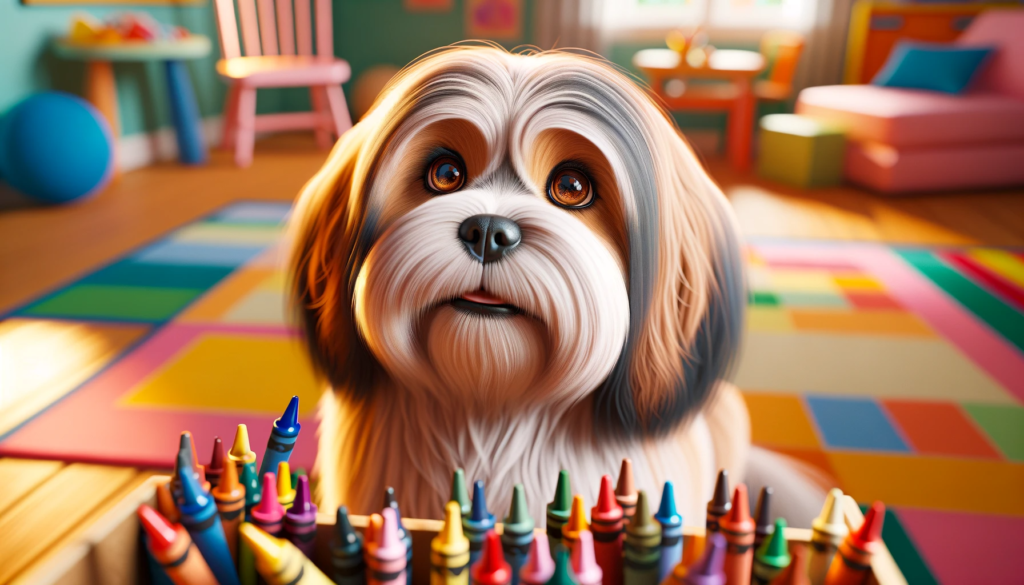
What Are Crayons?
Crayons are a popular art supply used by people of all ages for coloring and drawing. They are available in a wide range of colors and sizes and are typically made of a combination of paraffin wax, beeswax, and color pigments. These ingredients are carefully blended together to create a substance that can be easily shaped into a stick form.
Depending on the brand and quality of the crayon, other additives such as stearic acid or talc may also be included. These ingredients can help improve the texture, color intensity, and durability of the crayon, making it easier to use and creating more vibrant colors.
While crayons are generally considered safe for human use, it’s important to note that they can be dangerous if ingested by pets like dogs. Dogs chewing crayons can cause health issues such as intestinal blockages. Keep art supplies away from pets and supervise them during activities to prevent accidents.
Are Crayons Toxic To Dogs?
While crayons are not highly toxic to dogs, they can still pose a potential danger if ingested in large quantities or in certain circumstances. The wax and pigments used in crayons can cause gastrointestinal irritation and upset stomach, leading to vomiting or diarrhea. Crayons can cause a gastric obstruction or blockage in a dog’s digestive system, which can be life-threatening and require immediate medical attention. Additionally, if a dog chews or bites off small pieces of the crayon, there is a risk of choking.
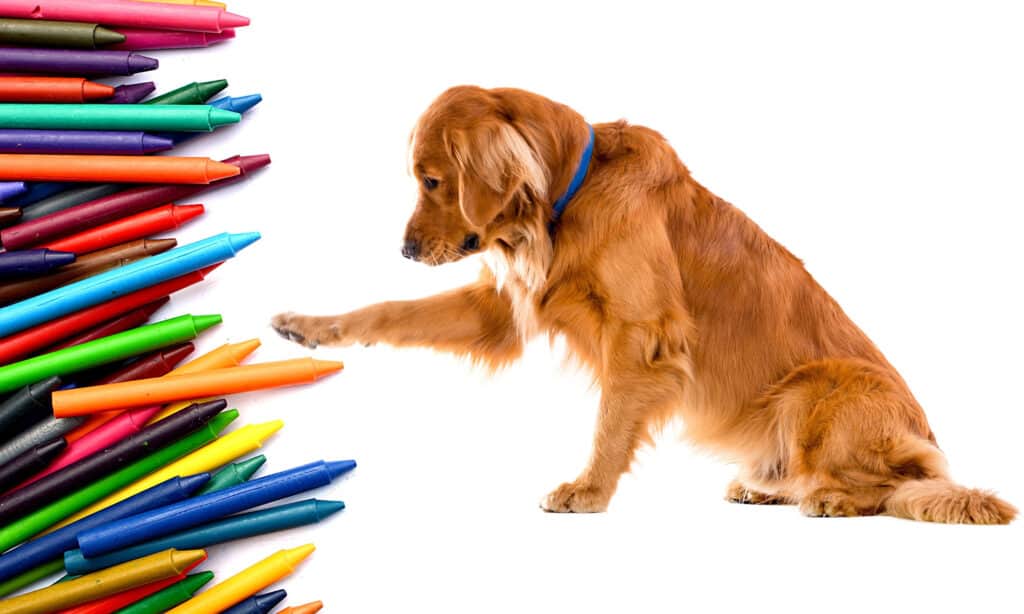
What Should You Do If Your Dog Eats Crayons?
If you catch your dog eating crayons or suspect that they have ingested some, there are a few steps you can take:
- Remove any remaining crayons: If there are any crayons within your dog’s reach, remove them immediately to prevent further ingestion.
- Observe your dog: Keep an eye on your dog’s behavior and look for any signs of distress or discomfort. Some symptoms to watch out for include vomiting, diarrhea, abdominal pain, or loss of appetite.
- Contact your veterinarian: If your dog eats crayon or shows these symptoms, contact your veterinarian immediately. They may recommend bringing your dog in for an examination or provide advice on how to manage any symptoms.
- Monitor your dog’s bowel movements: Monitor your dog’s poop to ensure they pass crayon pieces without trouble. If you notice any signs of constipation or blockage, contact your veterinarian immediately.
- Prevent future incidents: Keep crayons out of reach and supervise your dog around art supplies to prevent ingestion. Consider providing them with safe and appropriate chew toys to keep them occupied and distracted from other objects.
Prevention is best, but if your dog eats crayons, take necessary steps for their safety.
What Ingredients Are Used to Make Crayons?
The process of making crayons involves combining wax and color pigments. Two of the most commonly used waxes are paraffin wax, which is made from petroleum, and beeswax, a natural wax created by bees. Once mixed, the wax and pigments work together to produce the bold and lively colors that we all associate with crayons. Pigments can come from natural or synthetic sources, such as minerals or plants. Manufacturers may also include other ingredients, like stearic acid or talc, to modify the texture and durability of the crayon depending on the brand and product line. The specific quantities of each ingredient can vary based on the quality and manufacturer.
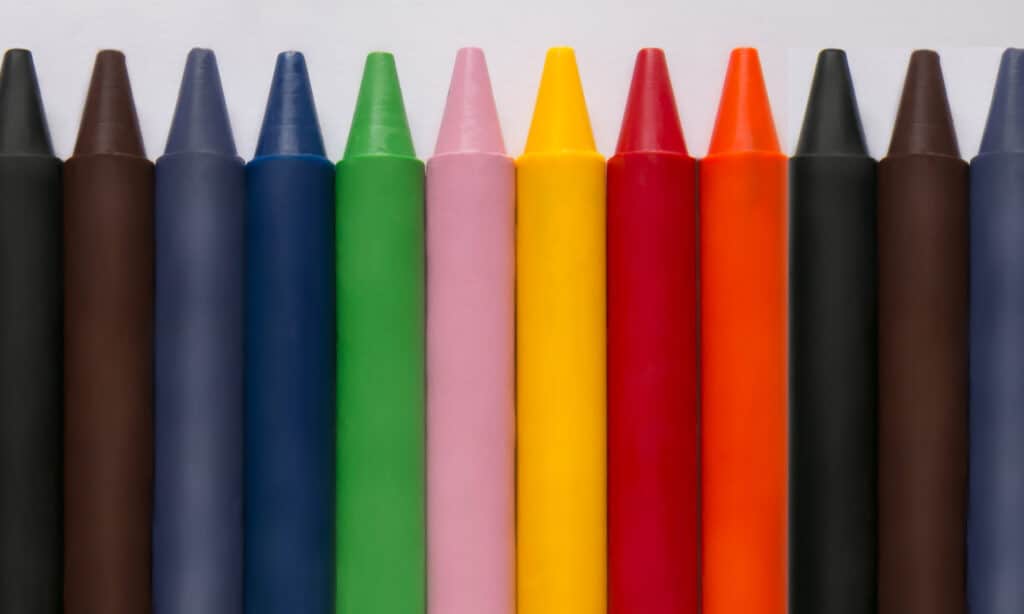
Potential Physical Dangers Presented by Crayons
While crayons are generally considered safe for human use, they can pose potential physical dangers if ingested or used improperly. If a dog eats a crayon, the wax and pigments can cause gastrointestinal upset, resulting in symptoms like vomiting or diarrhea. In severe cases, crayons can cause blockages or obstructions in a dog’s digestive system, which can be life-threatening and require immediate medical attention. Additionally, if a dog bites off or chews small pieces of a crayon, there is a risk of choking.
For humans, crayons can also pose a choking hazard if they are not used properly, particularly for young children who may put objects in their mouths. If a crayon breaks or shatters, small pieces can become lodged in a child’s airway. It’s essential to supervise children when they are using crayons and replace any broken or damaged crayons promptly. Finally, the fumes from melting crayons can be harmful if inhaled, so it’s important to use them in a well-ventilated area or avoid melting them altogether.
Signs and Symptoms of Choking or Gastric Obstruction
If a dog ingests a crayon, they can be at risk of choking or gastric obstruction. Here are some signs and symptoms to watch for:
- Difficulty breathing: Blocked airway can cause difficulty breathing or gasping for air in dogs. This is a medical emergency and requires immediate attention.
- Coughing or gagging: Dog coughing or gagging? May indicate something stuck in their throat.
- Vomiting or regurgitation: Dog vomiting can indicate ingestion of stomach-upsetting substances.
- Loss of appetite: Decreased appetite or refusal to eat may indicate gastrointestinal distress in your dog.
- Abdominal pain or discomfort: If your dog shows signs of abdominal pain or discomfort, it could indicate digestive blockage.
If you notice any of these signs or symptoms, it’s essential to contact your veterinarian immediately. Choking and gastric obstruction can be life-threatening conditions, and prompt medical attention is necessary to ensure your dog’s safety and well-being.
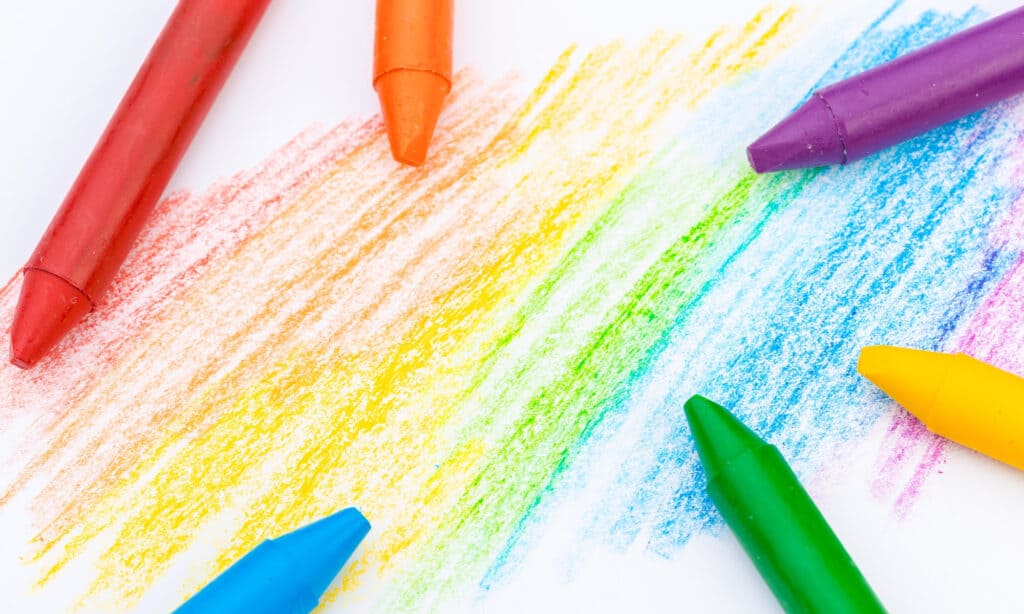
When Should You Take Your Dog To The Vet?
After ingesting a crayon, closely monitor your dog for signs of discomfort. Seek immediate veterinary attention if any symptoms appear.
- Vomiting or diarrhea that lasts longer than 24 hours or is severe.
- Loss of appetite or refusal to eat.
- Abdominal pain, restlessness, or discomfort.
- Difficulty breathing or gasping for air.
- Unusual behavior or lethargy.
- Signs of dehydration, such as dry mouth, sunken eyes, or reduced skin elasticity.
- Any signs of choking or difficulty swallowing.
- If your dog has ingested a large amount of crayon or you are uncertain of how much they have ingested.
If your dog shows symptoms or you have concerns, contact your veterinarian. Your vet can examine your dog and determine if any further treatment is necessary to ensure their safety and well-being. Remember, early intervention is key to preventing potentially serious complications from crayon ingestion.
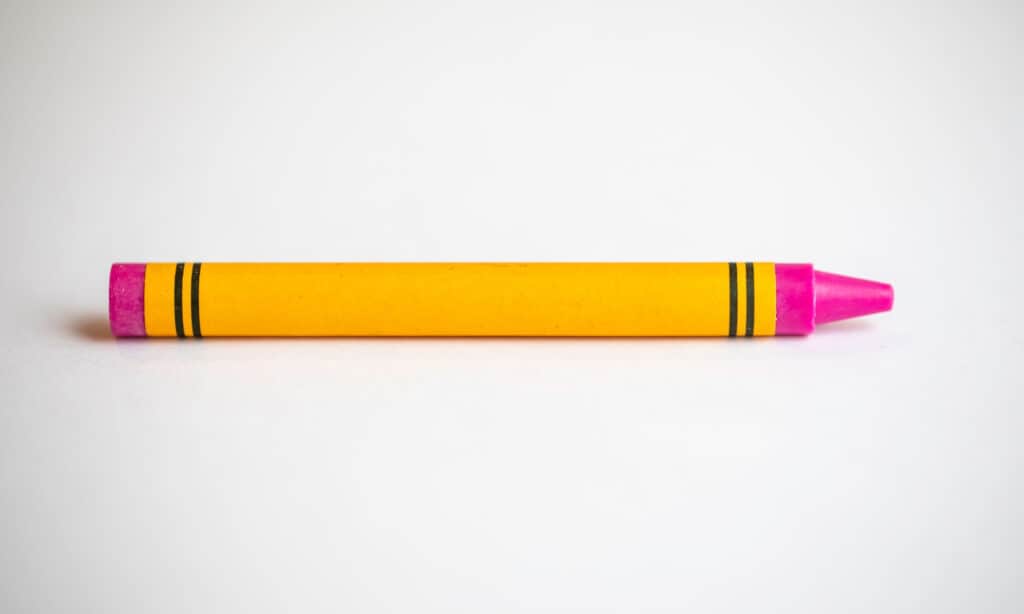
Prevention Is The Best Medicine – How To Prevent Your Dog from Eating Crayons
Preventing your dog from eating crayons is the best way to avoid any potential health risks. Here are some tips to help prevent your dog from eating crayons:
- Keep crayons out of reach: Store your art supplies and crayons in a place that your dog cannot access. Keep in mind that dogs are excellent climbers and jumpers, so be sure to store them in a high cabinet or secure container.
- Supervise your dog: When you are using crayons or other art supplies, make sure to supervise your dog closely. If your dog is showing an interest in the crayons, redirect their attention to a toy or treat.
- Provide appropriate chew toys: Safe chew toys keep dogs occupied and happy. This can reduce the likelihood of them chewing on non-toy objects like crayons.
- Train your dog: Teaching “leave it” helps prevent dogs from eating non-food items like crayons.
- Keep your dog active: Giving your dog enough exercise and stimulation can prevent destructive chewing behavior.
By taking these preventive measures, you can minimize the risk of your dog ingesting crayons and reduce the likelihood of any health complications.
So, Why Do Dogs Eat Crayons?
Dogs may be attracted to crayons for a variety of reasons. Here are some of the common reasons why dogs might eat crayons:
- Curiosity: Dogs are naturally curious animals and may want to investigate and explore new objects, like crayons.
- Boredom: Lack of stimulation can lead to destructive chewing of non-food items like crayons by dogs.
- Attention-seeking behavior: Some dogs may eat crayons as a way of getting their owner’s attention.
- Pica: Pica is a condition where dogs crave and eat non-food items. This can be caused by a nutrient deficiency or a behavioral disorder.
- Separation anxiety: Dogs with separation anxiety may engage in destructive behaviors when left alone.
It’s essential to determine why your dog is eating crayons so that you can address the root cause and prevent future incidents. If you notice that your dog is eating crayons frequently or displaying any concerning behavior, it’s best to consult with your veterinarian to rule out any underlying medical issues or behavioral disorders.
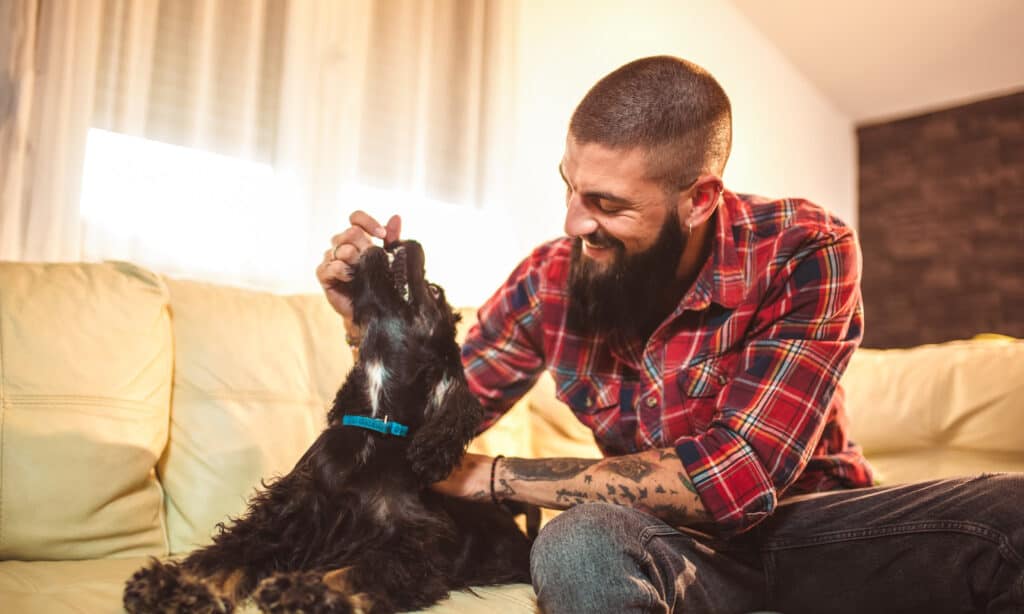
Conclusion
In conclusion, while crayons may seem harmless, they can pose a potential danger to dogs if ingested in large amounts or under certain circumstances. The wax and color pigments found in crayons can cause gastrointestinal upset, blockages, and even choking, making it essential to monitor your dog’s behavior and look out for any signs of distress. However, by taking preventive measures like keeping crayons out of reach, supervising your dog, providing appropriate chew toys, and training your dog, you can reduce the likelihood of your dog eating crayons and minimize the potential health risks. If you suspect that your dog has ingested a crayon or is displaying any concerning behavior, it’s best to contact your veterinarian immediately. Remember, early intervention is key to ensuring your dog’s safety and well-being.
~Sheena
